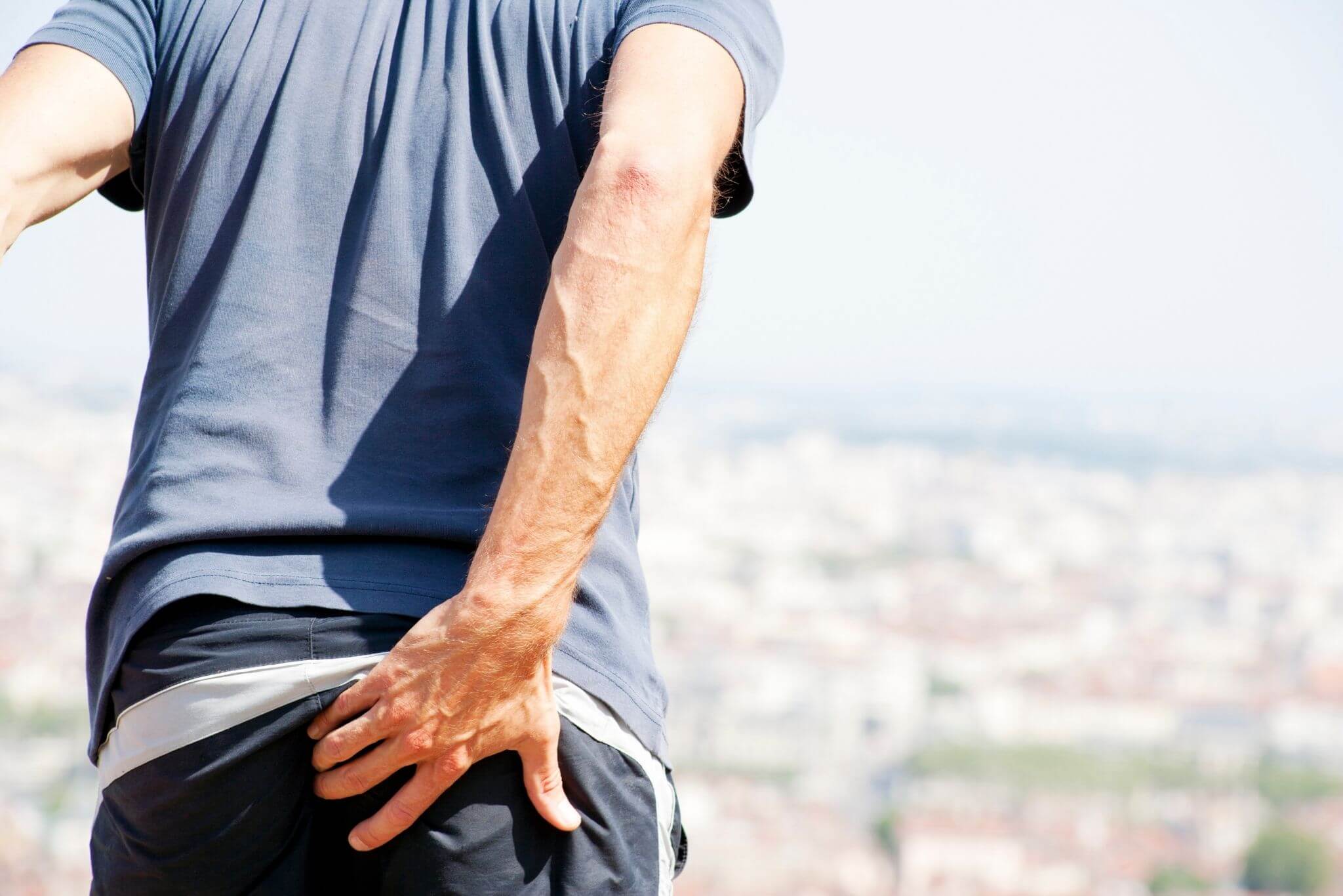
Entrapment of the pudendal nerve
When the pudendal nerve becomes trapped, it can cause chronic pelvic pain and manifest itself in many different ways. It is a pathology that is difficult to diagnose due to a lack of knowledge on the part of some professionals and because the pain tends to manifest itself in a very non-specific way in an area where multiple organs are located. For this reason, it is sometimes included in the catch-all term: chronic pelvic pain. It takes an average of 4 years to diagnose and the number of doctors visited before diagnosis varies between 10 and 13. The prevalence is much higher in women, with 7 out of 10 patients.
What is the pudendal nerve?
The pudendal nerve is located in the pelvis and in its course it passes through multiple structures such as bones, muscles and ligaments. The space between these structures is very narrow "like gorges" which, for various reasons, can cause the nerve to become trapped between these structures in the form of a pincer. Depending on the height and the area of the nerve that is affected, the patient may present different symptoms, which vary from person to person.
What happens when the pudendal nerve is affected?
It is a neuropathic pain. It causes pain affecting the pelvic-genital area. The type of pain varies greatly and can range from numbness to coldness or shocks.
In addition, other organs such as the bladder and rectum may be affected and this can lead to symptoms during urination, defecation or sexual intercourse. This type of pain generates great anxiety and suffering for patients and has an impact on their personal and professional lives. Some patients sometimes have suicidal thoughts when they think that no one will be able to treat them and they are not able to bear the suffering.
What are the symptoms of pudendal neuralgia?
Pain under the stomach and in the pelvis, urinary, sexual and defecation problems, each patient will be different and there may be more involvement of one area or another.
The pain typically worsens throughout the day so that patients have less pain in the morning and is relieved or disappears at bedtime.
Symptoms are characteristically worse when sitting. Patients prefer to stand or sit on a hard surface so that the bone supports the weight of the body and the cushion does not compress the nerve. They characteristically sit badly on purpose: they sit on the edge of the chair with the rear most part of the buttocks (to rest on the bone) or on the side.
Another form in men is the so-called chronic prostatitis with perineal pain and ejaculation disorders that does not subside and patients are only treated with antibiotics for long periods of time.
The pain is neuropathic, which means that it is like tearing, burning, very internal and sometimes just the rubbing of underwear creates unbearable pain, which causes many patients not to wear underwear and can only walk around their homes naked.
In the sexual sphere: It is often associated in men with premature ejaculation, pain on ejaculation or difficulty in having or maintaining erections. It is a frequent cause of erectile dysfunction in young men. In addition, there may be pain after orgasm. Men report a decrease in penis size or a cold sensation in the glans penis.
Women may report pain with intercourse; if they reach orgasm, the pain is much worse and can occur up to 24-48 hours after intercourse. This pain causes women to develop avoidance behaviours with sexual intercourse and possible relationship problems. Another characteristic symptom is a cold sensation in the clitoris or a foreign body sensation in the vagina.
Urination: urinating several times a day, burning when urinating or increased difficulty urinating; many patients report worse urination and a decreased urine stream, which is often mistaken for a prostatic condition. This is caused by contraction of the pelvic floor muscles surrounding the urethra.
Anorectal: many patients report a foreign body sensation in the rectum "like having a golf ball in the rectum". Sensation of having to defecate several times a day, pain after defecation, pain in the anus.
How is pudendal neuralgia diagnosed?
First of all, there must be an exhaustive interrogation with a doctor who is familiar and expert in treating this type of pathology. This pathology is very difficult to diagnose because the symptoms that each patient suffers from are very ambiguous and can be confused with other pathologies and also because all the symptoms are not always present and vary in each patient.
Given the ambiguity of this disease and its difficult diagnosis, the type of consultation in which they are treated requires a lot of time (sometimes more than an hour) and a very intimate atmosphere due to the nature of the symptoms.
During the physical examination, the perineum is explored to locate the specific areas of pain to check if they coincide with the territories that are innervated by the nerve. Through a series of very characteristic manoeuvres, the symptoms normally experienced by the patient can be reproduced.
How is pudendal neuralgia treated?
The type of treatment, when to carry it out and the complementary tests should be discussed between the specialist and the patient. Between the two of them, the extent of the different treatments will be assessed, including the possibility of considering surgery at a given moment.
For our team, the ultimate goal is to provide the right quality of life for the patient, in a practical and effective way but never to create false expectations for patients of the different treatments.
The first phase of treatment is to correct possible external factors that may be causing these symptoms. In the case of physical activity that may be the cause or to correct the posture, change the bicycle saddle.
Postural hygiene should always be evaluated by a professional: a posturologist to assess the possible causes of pelvic instability. When insoles are not sufficient, postural physiotherapy is carried out and evaluated for a period of 6-8 weeks. With this type of treatment, up to 10-15% of patients are treated and do not require more treatment than insoles and some pelvic floor rehabilitation exercises and postural hygiene.
Pelvic floor physiotherapy: Classic physiotherapy involves stretching and massage to relax the contracted muscles of the perineum. With this type of treatment, patients experience rapid relief.
The origin of the contracture must always be corrected, because if it is not corrected (e.g. with insoles or postural physiotherapy), the pain relief lasts only a few days/weeks.
Medication: There are different drugs that must be prescribed in a staggered manner within a protocol: Analgesia should be administered with opioid-type medication, as anti-inflammatory medication is usually insufficient.
The reality is that when patients come to the clinic they are already polymedicated, even with a pain unit and very strong drugs that produce important side effects and even alter the mood and cognitive capacity of the patients. It must be remembered that this type of medication is dedicated to reducing/relieving the different symptoms, but not to curing the cause of the disease.
As a last step and when everything else is insufficient, laparoscopic pudendal release surgery should be considered as a treatment. The laparoscopic approach provides the best view to release the nerve more precisely and with less risk. The surgery consists of sectioning the sacro-spinous ligament and opening the roof of Alcock's canal.
Our specialists
Don't let urological concerns get to you. Schedule an appointment with our expert urology team for accurate diagnosis and treatment.







